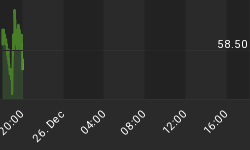What happens when bad weather and a structural uptrend come together? The aftermath of Hurricane Ike may give us some insight. This week's chart is of global rice stocks. Rice, as we know, is an important food in many countries around the world. While rice stocks have improved, current stocks are equal to little more than two months of global consumption. As second hurricane has moved through an important part of U.S. rice growing region, we may again be reminded that the world has moved into an era of a short Agri-Food supply. U.S. rice prices moved Friday to an eight week high. While the Street thinks that commodities is a homogeneous group, we suspect people in the world will have trouble substituting metallurgical coal for a bowl of rice.

The world's Agri-Food system is a tightly meshed set of global harvests. With little more than two months of rice consumption on the shelf, every harvest is necessary. While copper purchases can be deferred, eating is not optional. That is what makes Agri-Food a far different subset of commodities. Demand equations for food includes one special condition: Eating is not optional. Rice is an important part of the global Agri-Food Rubick Cube. Some nations have no choice but to import rice for consumers at whatever the market price might be. If rice is less available, they will purchase wheat, for example. That shift in purchases will push up prices of the alternative Agri-Food. Investments in Agri-Food will benefit over next decade from rising consumer incomes, a lack of substitutes for food, and a shift to higher value foods, such as meats. Street strategists can continue their blather about global slowing, but in previous times they recommended finance stocks, like Lehman and FRE and FNM. Is your portfolio ready for the future, or is it mired in yesterday?
AGRI-FOOD THOUGHTS are from Ned W. Schmidt,CFA,CEBS, publisher of Agri-Food Value View, a monthly exploration of the Agri-Food grand cycle being created by China, India, and Eco-energy. To review a recent issue, email to agrifoodvalueview@earthlink.net.
Should Brown Gold be in your portfolio?
2nd Annual U.S. Agricultural Land As An Investment Portfolio Consideration is now available. This report is a quantitative and statistical validation for replacing equity investments with an investment in U.S. agricultural land. U.S. agricultural land makes investment portfolios more efficient. It is intended for the sophisticated and knowledgeable investor. Order it at http://home.att.net/~nwschmidt/OrderAgriLand2008.html.















